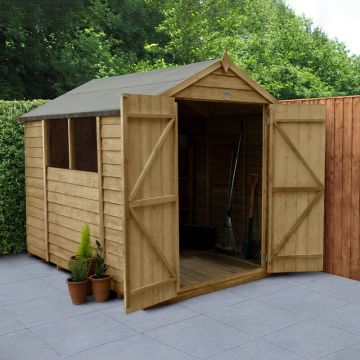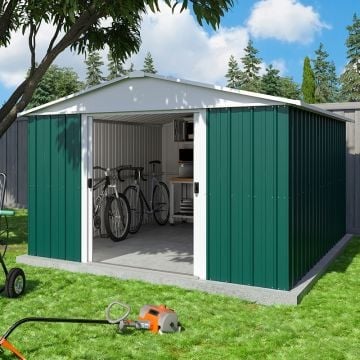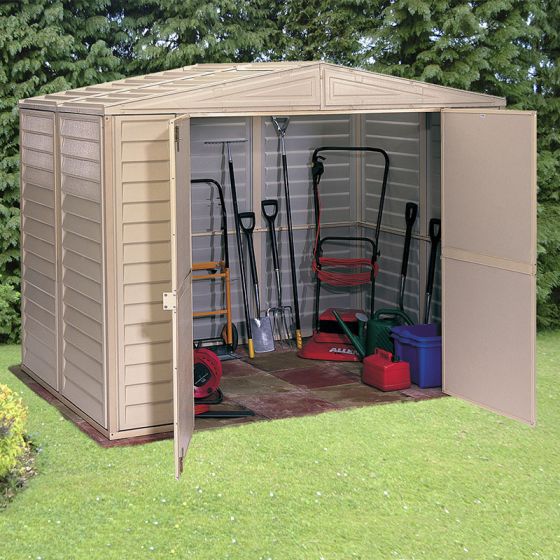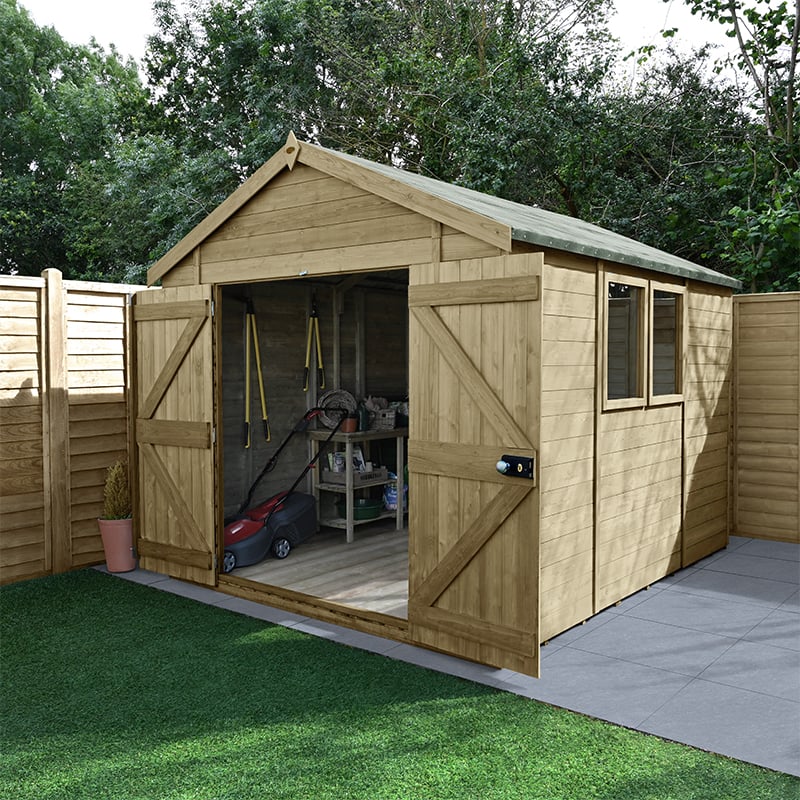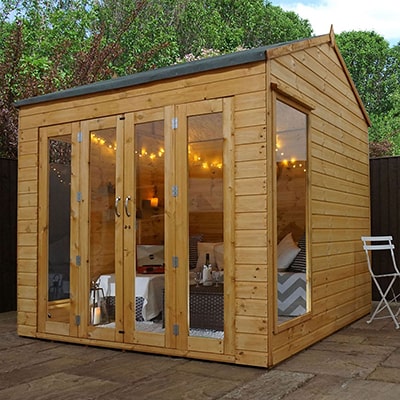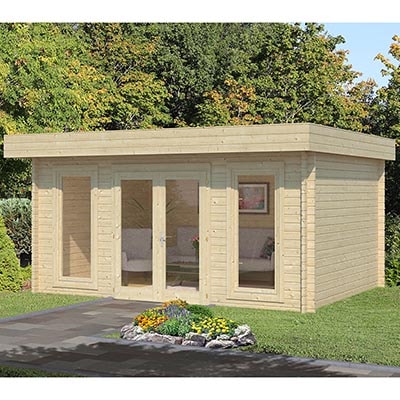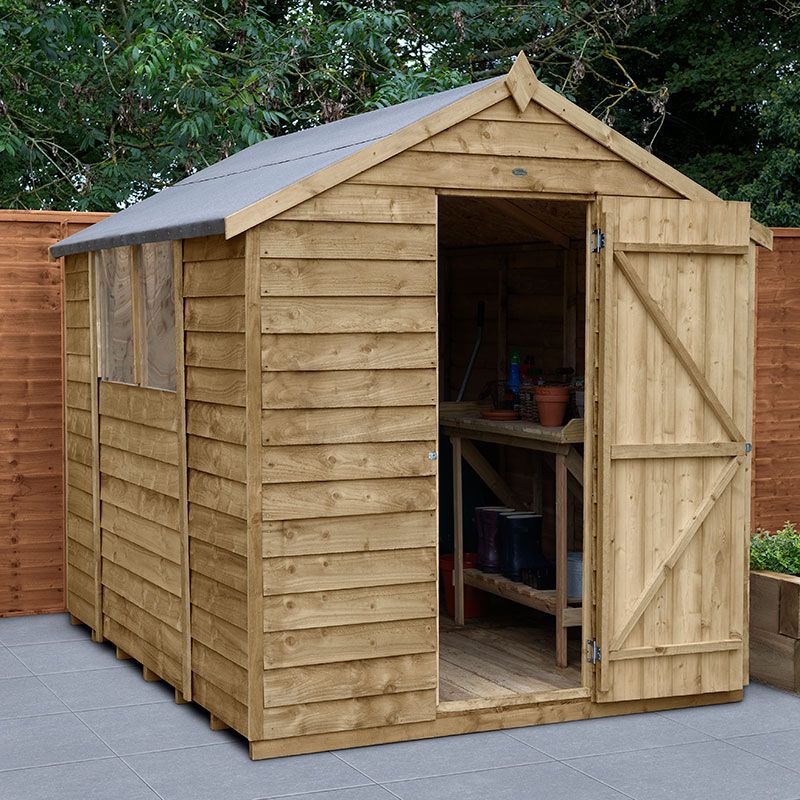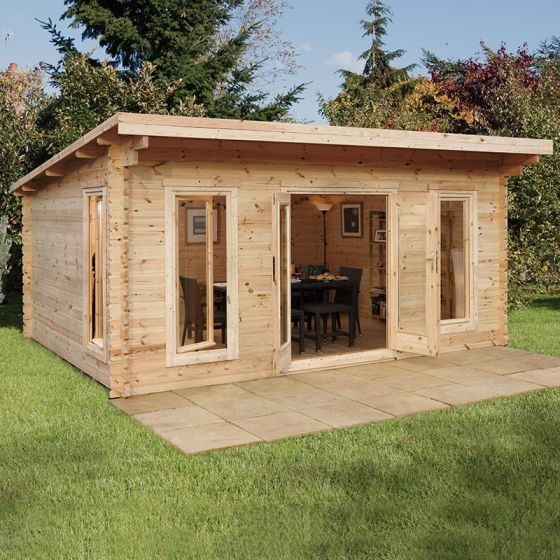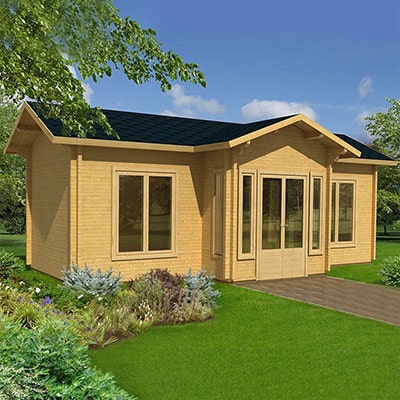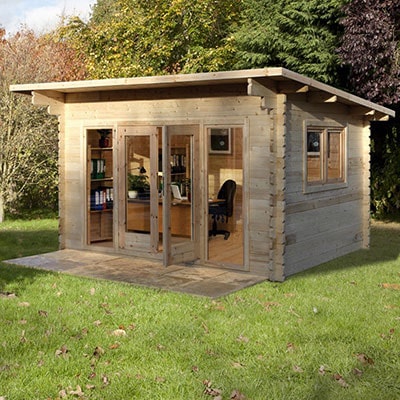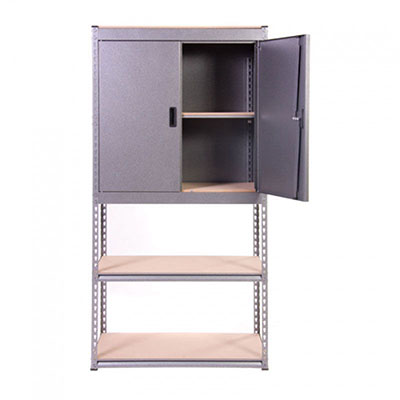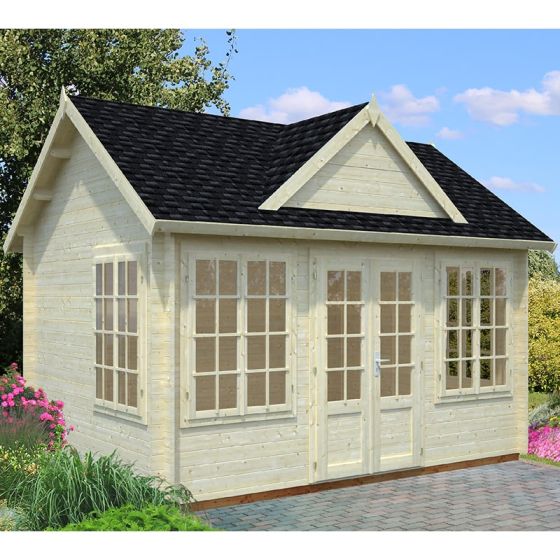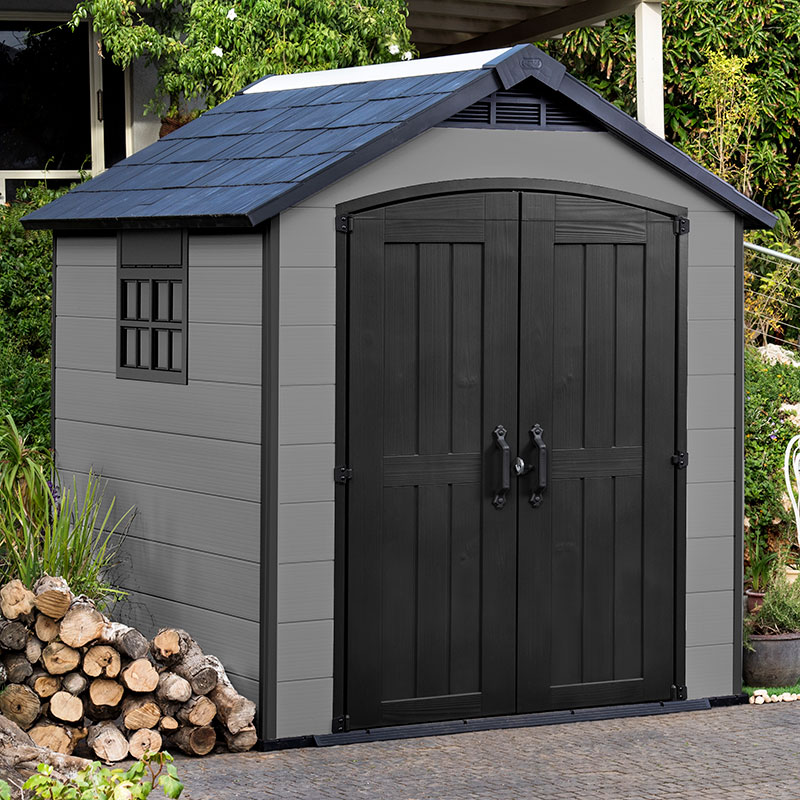![Understanding Shed Cladding Materials, Types, and Thickness [UPDATED]](https://www.shedstore.co.uk/media/magefan_blog/shed-cladding.jpg)
When choosing the right types of shed cladding for your garden shed, there are several options to consider, each with its own unique properties and advantages. Understanding shed cladding options and their respective thickness is essential for ensuring longevity and performance.
Here we explore the various types of cladding for garden sheds including various styles available. Additionally, we will explore the importance of shed wall thickness, addressing its impact on factors such as durability, insulation, weather resistance, and overall cost-effectiveness.
Editor’s Note [17.08.23]: Our guide to “what is cladding thickness” was originally published on August 22, 2019. This version has much newer content including new sections about cladding materials, benefits of wooden cladding, wooden shed cladding options as well as choosing the right wooden cladding and shed wall thickness.
What is cladding?
Cladding is the building material that makes up the outer structure of a garden building, in other words, the walls, floor and roof.
The measurements given in shed, summer house and log cabin descriptions, relating to these features, are referring to their thickness.
If, however, one measurement is given prominence, or is referred to in the title of the garden building, it will be describing the walls.
Therefore, 'cladding thickness' is generally just another name for wall thickness.
Types of shed cladding materials – what are the options?
There are various types of shed cladding materials, which can be used for sheds. These each have their own merits, costs, benefits, and have been summarised below.
Wood
This is a popular choice for shed cladding due to its natural aesthetic appeal and versatility. Subsets of wood are:
- Composite cladding - this is made from a combination of wood fibres and plastic
- Plywood cladding - this is a budget-friendly option that can be painted or stained
Metal
Steel or aluminium sheets provide a durable and low-maintenance option offering excellent protection against harsh weather.
Brick or stone
For a more permanent and traditional aesthetic, brick or stone veneers can be used.
Fiber cement
These boards are a blend of cement, sand, and cellulose fibers, offering excellent durability and resistance to rot, pests, and fire.
UPVC
This cladding is a lightweight and low-maintenance option that can be an alternative to wood or metal cladding.
The remainder of this article will focus on wooden shed cladding, which is our preferred choice from all the cladding materials available, here at Shedstore.
Benefits of wooden shed cladding
Wooden shed cladding offers numerous advantages that make it a popular choice among shed owners. From its natural beauty to its environmental benefits, wooden cladding enhances both the aesthetics and functionality of sheds.
Natural beauty
Wooden cladding exudes timeless elegance, adding a rustic and inviting appeal to any shed. The unique grain patterns and rich tones of wood as cladding materials create a warm and welcoming atmosphere, making the shed a focal point in the garden. Moreover, the natural variation in wood colour ensures that each cladding piece is distinct, adding character and individuality to the shed's exterior.
Insulation properties
Wood is an excellent insulator, providing superior thermal performance compared to other cladding materials. Its inherent ability to regulate temperature helps maintain a comfortable environment inside the shed, regardless of the weather conditions outside.
Environmental benefits
Additionally, wood is a renewable and sustainable resource, making it an eco-friendly choice for environmentally conscious shed owners. By opting for wooden cladding materials, you contribute to reducing carbon emissions and promoting a greener planet, while still enjoying the natural beauty and functionality that wood offers.
Shed cladding options
Wooden cladding offers a range of shed cladding options for enhancing the look and functionality of sheds. The various types of shed cladding bring unique features and advantages, making it essential to understand their characteristics to make an informed decision.
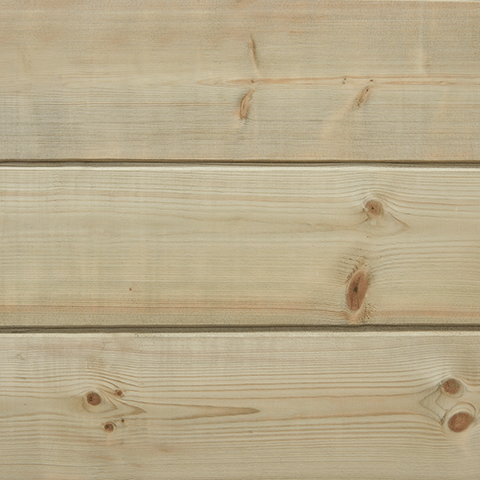

Tongue and groove cladding
Tongue and groove cladding features a precise construction with interlocking boards that fit together seamlessly. The tongue and groove boards create a tight and weather-resistant seal, preventing water infiltration and ensuring optimal protection for shed walls. Its seamless appearance adds a polished and clean look to the shed, making it a popular choice for both traditional and contemporary shed designs.
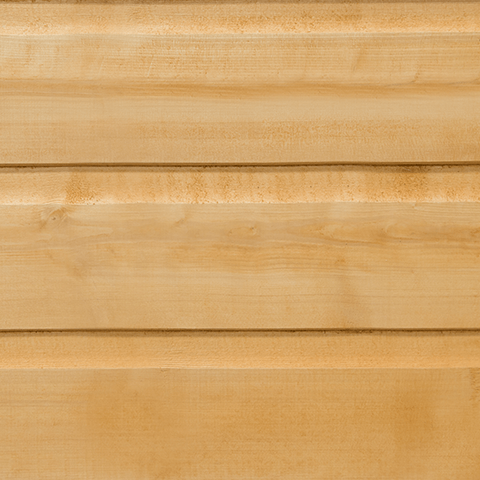

Shiplap cladding
Shiplap cladding boasts a distinctive overlapping profile, where each board fits on top of the adjacent one. This overlapping pattern creates a channel for water runoff, reducing the risk of moisture penetration and enhancing shed durability. Shiplap's weather-resistant properties make it an ideal choice for UK sheds, although generally, it has a higher price point than tongue and groove alternatives.
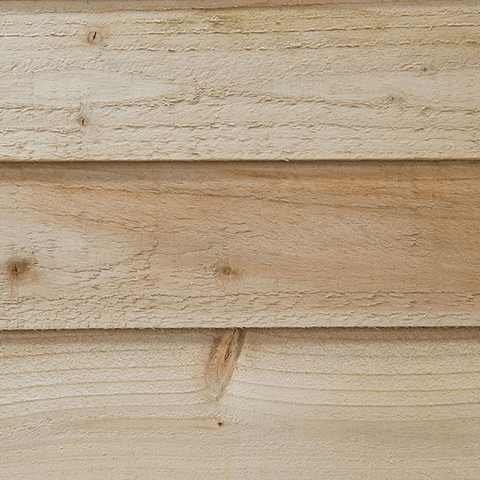

Overlap cladding
The last of our types of shed cladding options is overlap cladding, which features boards that overlap each other, creating a rustic and charming appearance for the shed. This design offers excellent protection against the elements and is particularly well-suited for sheds in exposed or rural areas. Moreover, overlap cladding often comes at a more affordable price point, making it a budget-friendly option for those looking to enhance their sheds without compromising on quality and durability.
Is shed cladding thickness important?
In relation to wooden sheds, log cabins and, to a slightly lesser extent, summerhouses, the answer is yes.
When it comes to metal and plastic sheds, the shed cladding thickness is not very important. The main focus here should be on the type of metal or plastic used as cladding.
So, let's take a look at the shed cladding options and types of cladding for wooden garden buildings and why it should influence your choice of shed, summer house or log cabin.
The typical cladding thickness of a wooden garden building
Wooden garden sheds
Wooden sheds usually have walls between 7 and 12mm thick.
Their roofs are roughly the same, whilst the floors tend to be marginally thicker to support the weight of heavy garden equipment and regular footfall.
Overlap/ tongue and groove wooden sheds
As the name suggests, overlap cladding consists of sawn timber boards, nailed together to overlap each other.
This is a cheaper option than tongue and groove or shiplap cladding, where the shed cladding boards are all interlocking.
Overlap-clad shed walls are normally 7-8mm thick, whilst tongue and groove and shiplap boards tend to be around the 12mm mark.
Summer houses
Summer houses are invariably made of wood and their cladding resembles a wooden garden shed, ranging from 7-12mm.
Anything thicker than this and it might get uncomfortable on a hot summer’s day.
Log cabins
Log cabins are made from top-quality timber and originate from Scandinavia and are designed for year-round usage, so are the most thickly clad garden buildings.
We stock log cabins with the following timber cladding wall thickness: 19mm, 28mm, 34mm, 44mm and 70mm.
Reasons why cladding thickness is important
Cost
The general rule of thumb is the thicker the cladding, the more expensive the garden building.
If you want a cheap wooden shed, the chances are from the various types of cladding it will be constructed from 7-8mm overlap cladding.
Likewise, if you’re buying a top-of-the-range log cabin, you should expect a cladding thickness of at least 44mm.
Thermal insulation
All other things being equal, the thicker the walls, floor, and roof, the better insulated the garden building.
This is why the most expensive log cabins have a cladding thickness of between 44 and 70mm.
As mentioned before, it is also why a summer house's cladding rarely exceeds 12mm.
General weather resistance
As with insulation, the thicker the cladding, the greater the all-round weather resistance of the wooden garden building.
For example, in extremely windy conditions, a poorly maintained 7mm overlap-clad woodshed, might be damaged, but a 70mm-thick log cabin will remain standing strong in almost any type of weather.
Noise
Another reason thickly clad garden buildings are more expensive is that they are better equipped to block out noise.
In a garden storage shed, this probably isn’t important to you, but if you’re using your log cabin as a home office then it will undoubtedly be a consideration.
Security
Your garden building’s security is usually rated according to the position/ absence of windows, the locking system, and the bracing on the doors, but shed cladding thickness is an important factor too.
A determined thief with a hammer could quickly gain access to a 7mm overlap wooden shed, but a 70mm tongue and groove log cabin is a completely different proposition.
Shelving
With the exception of most (but not all) plastic sheds, any garden building will support shelving.
However, if you’re planning on putting up some seriously heavy storage shelves, a 12mm tongue and groove cladding wall will provide better support than 7mm overlap cladding.
Appearance
Your garden building’s appearance will clearly depend on a whole host of factors, but cladding will play its part too, particularly when seen up close.
For example, 7-8mm overlap-clad sheds and summer houses often have a rustic, vintage feel, whilst 12mm tongue and groove sheds and 44mm log cabins oose solidity.
Choosing the right wooden cladding and shed wall thickness
Selecting the appropriate wooden cladding and shed wall thickness is vital for optimising both the functionality and visual appeal of your shed. By considering the shed's style, budget, and longevity requirements, you can make well-informed choices for the best cladding type to meet your needs.
Match types of cladding to shed style and aesthetics
When choosing wooden cladding, align it with your shed's architectural style and desired aesthetics. For a traditional look, opt for tongue and groove cladding, which adds elegance and charm. Alternatively, shiplap cladding suits modern sheds with its sleek and contemporary appearance. Providing guidance on matching the types of cladding to specific shed styles will help readers achieve a cohesive and visually appealing outdoor space.
Balance budget and shed longevity
Offering insights into the cost-effectiveness and lifespan of different wooden cladding types allows readers to make informed decisions based on their financial considerations and the shed's intended longevity.
For budget-conscious individuals, overlap cladding provides a cost-effective yet durable option. On the other hand, those seeking long-lasting performance may lean towards tongue and groove or shiplap cladding for its extra shed wall thickness and longevity. Empowering readers to strike the right balance between budget and longevity ensures they get the best value for their investment in shed improvement.
Concluding thoughts
The article discusses the importance of understanding shed cladding materials, types, and thickness for garden sheds. Shed cladding refers to the outer structure of a shed, including walls, floors, and roofs. Various cladding materials such as wood, metal, brick, and more are available, each offering unique benefits.
Wooden cladding is popular due to its natural beauty, insulation properties, and environmental advantages. The article delves into different wooden shed cladding options, such as tongue and groove, shiplap, and overlap cladding, and explains why shed cladding thickness is essential in terms of cost, insulation, weather resistance, noise reduction, security, shelving, and appearance.
Readers are encouraged to match cladding types to shed style and consider the balance between budget and longevity.
Contact us about garden buildings for sale
Shedstore is the home of all garden buildings. We stock plastic, metal and wooden sheds, choose from both pressure treated sheds or dip treated sheds. We also sell a fantastic range of summer houses and log cabins.
What’s more, if you ever need advice on the best shed cladding thickness to choose for your new garden building, one of our friendly, UK-based experts is always available to help.
Discuss the types of cladding and your options with Shedstore in the following ways:
- Phone - 0333 003 0518
- E-mails – by completing our contact page form
- Text chat - contact us using the live chat app





